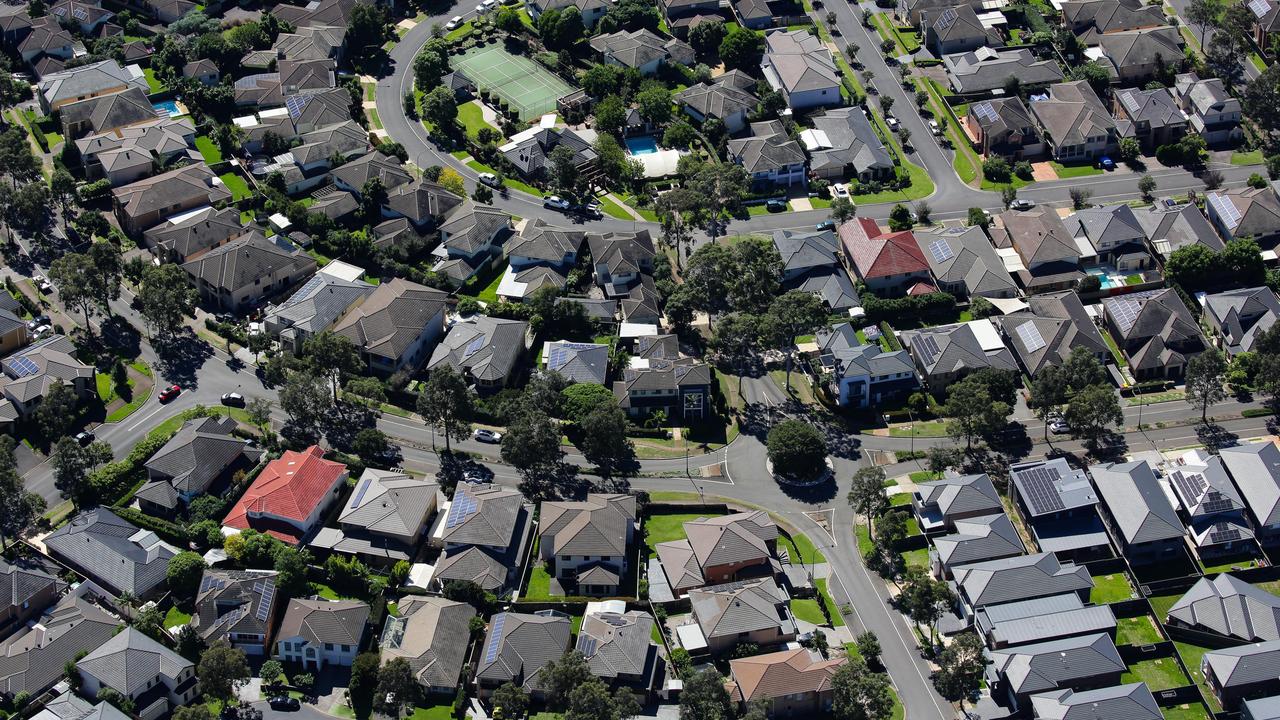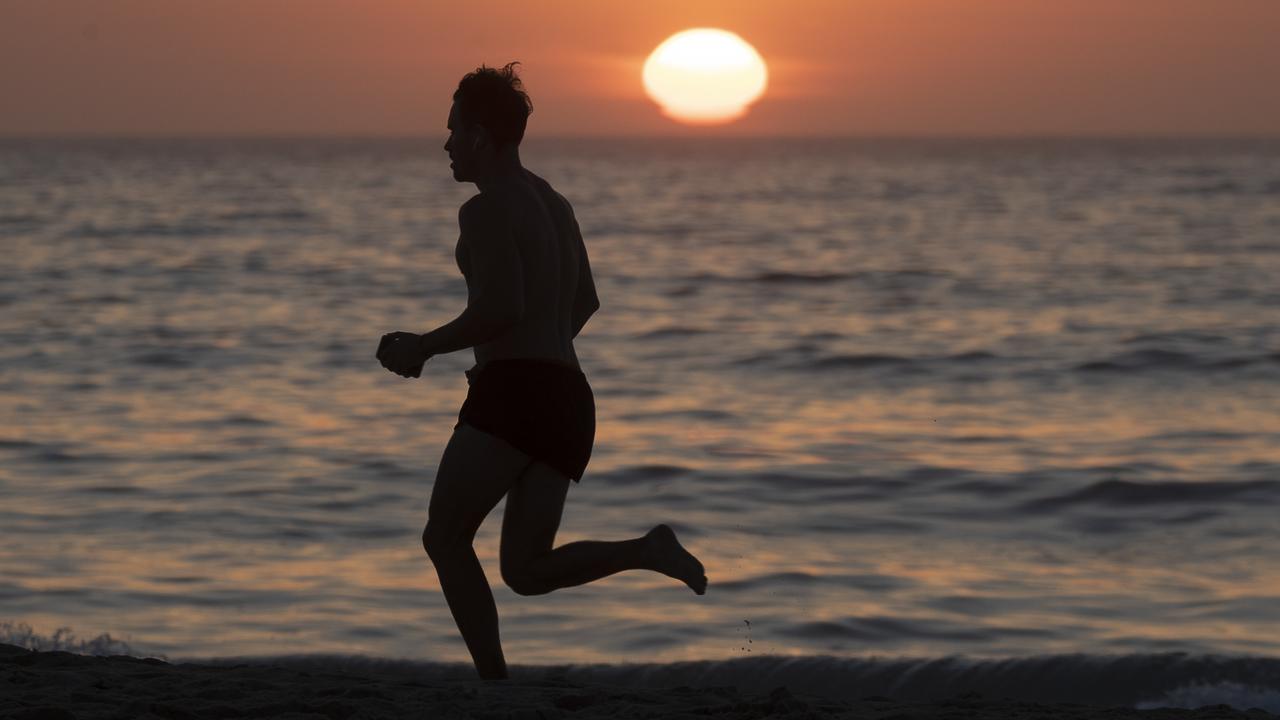Top urban planner’s grim warning: Western Sydney will be ‘hottest place on earth’ within months
An urban planner has warned that Aussies chasing the dream of owning their own home are causing a liveability nightmare.
Western Sydney is going to be the hottest place on Earth in just a few months.
That’s the grim warning from an urban planner who says our relentless push west – in the name of fixing the housing crisis – is creating a liveability nightmare.
In a frank video that has gone viral on TikTok, JOC Consulting senior urban planner Samuel Austin visits a new housing development in Marsden Park, about 50km northwest of the Sydney CBD, where he expects temperatures will soar this summer.
In six months’ time, he said, it will be “the hottest place on earth”.
Some of the thousands who watched the video commented in shock at the warning, while others shared their own stories of the “concrete nightmare” that is the housing estate, some likening them to “hell on earth”.
“I used to take my child to a GP in Marsden Park. Summer about [three] years ago I was driving him home from the GP and the car temp gauge was [50 degrees],” one mum said.
“Gregory Hills in [southwest] Sydney is the same. The new development at Menangle has white roofs. But still no extra trees planted,” another replied.


However, Mr Austin told news.com.au the large housing estates like the one at Marsden Park – with their tiny backyards, black rooves, and concreted everything – were not just unbearably hot, but had created dangerous urban heat islands that can reach temperatures up to 50C.
“Western Sydney is naturally hotter than the rest of Sydney, about two-degrees warmer than it is in the east,” Mr Austin said.
“But now we’re seeing temperatures sitting up to 10 and 12 degrees hotter above that baseline temperature, and that is driven entirely by urban development, these new housing estates, and urban release areas.”
Urban heat islands develop in areas with an abundance of hard, sealed surfaces like concrete, metal, asphalt, bricks, and lack of greenery and vegetation – like these housing estates.
The issue, Mr Austin says, is that while nature can absorb the heat from the sun, a “non-permeable surface like concrete and roofing … spits it back out”.
Even something as simple as the colour of the house’s roof, or the grass laid in the yard is impacting temperatures.
“It’s purely a decorative choice to have a black roof, it’s just the paint colour. There’s no difference in price, but we know a black roof is at least six degrees hotter than a white roof” he said.
“And synthetic grass. I can’t believe walking around [Marsden Park] the fake grass everywhere. It absorbs way more heat, but it’s about the same cost of getting the real stuff.”
What’s more, the lack of plant and vegetation cover in these areas also means that often there is less water in the landscape, which means there is less moving from through the atmosphere – via evapotranspiration – which helps cool the environment.

He said these factors amplified the effect climate change was having.
While dangerous temperatures were affecting lower income and vulnerable families.
“Western Sydney is traditionally more socio-economically disadvantaged than other areas, the most vulnerable people in Sydney are living out there,” he said.
“A lot of people are living in these new houses...people who are vulnerable are put at risk.
“Not to mention you have to rely heavily on airconditioning to cool down the house, which only adds to the stresses in a cost of living crisis. And if that [cooling] breaks down, it can be life-threatening, particularly to older people in these locations.”

Research and weather records have shown summer temperatures have been climbing in recent decades – and any Sydneysider will tell you - if it feels hot in the CBD, the temperatures are scorching in the west.
On January 4, 2020 Penrith was the hottest place on earth, with temperatures peaking just under 50C while the area by the Harbour Bridge topped out more than five degrees cooler.
Then in March this year, Sydney recorded its hottest month this summer; with data showing the west is not only seeing hotter days (and more of them) than coastal Sydney, but the hotter summers are lasting longer.
Modelling from the Australia Institute in 2022 estimated western Sydney could have extreme heat – temperatures over 35C – for 46 days per year by 2090 unless greenhouse emissions drop significantly.
That’s five times the historical average of nine over-35C days per year.
Extreme heat has also proven to be the biggest threat to human life, greater than any other natural hazard – including bushfires and floods – with 4500 deaths caused by periods of extreme heat since 1900, according to Risk Frontiers.
During 2000 and 2018, alone, there were 473 heat-related deaths reported, 354 of which occurred during heatwave conditions.

And yet, despite the warnings, there has never been more development in Sydney’s west than there is right now, as the government looks at urban sprawl as the solution to the housing crisis.
But Mr Austin, and many other planning experts, believe urban sprawl only creates more problems for Australians, given the lack of infrastructure, expense, and inconvenience of moving to new pop-up suburbs.
The issue, he said, is that councils in western Sydney know that heat is an “enormous problem”, but they are “struggling to do anything” because development planning and rollout is coming from the “top down”.
He said the mass development in the west was the direct result of urban release areas announced by the previous NSW government “about 12 years ago” that “completely override council controls”.
“Councils get no say in these spaces, they get to advocate what they’d like to happen, but it’s ultimately up to the state to decide what happens,” Mr Austin said.
“What’s really sad is that Blacktown Council, where Marsden Park is, is it’s a massive advocate for reducing heat, but they get little say on how prevent this [development] from happening.”
Without toppling the planning bureaucracy, Mr Austin said there were three relatively low-cost solutions to minimising urban heat islands.
These were addressing the “black roof issue”, laying real grass, and ensuring we have enough space to plant large trees with deep roots that can provide a shady canopy.





